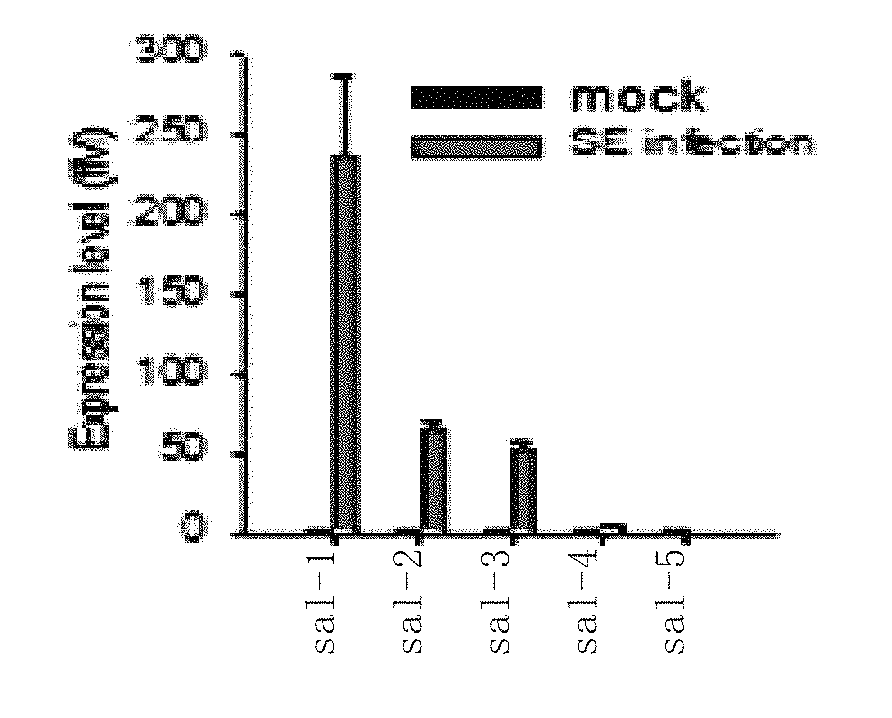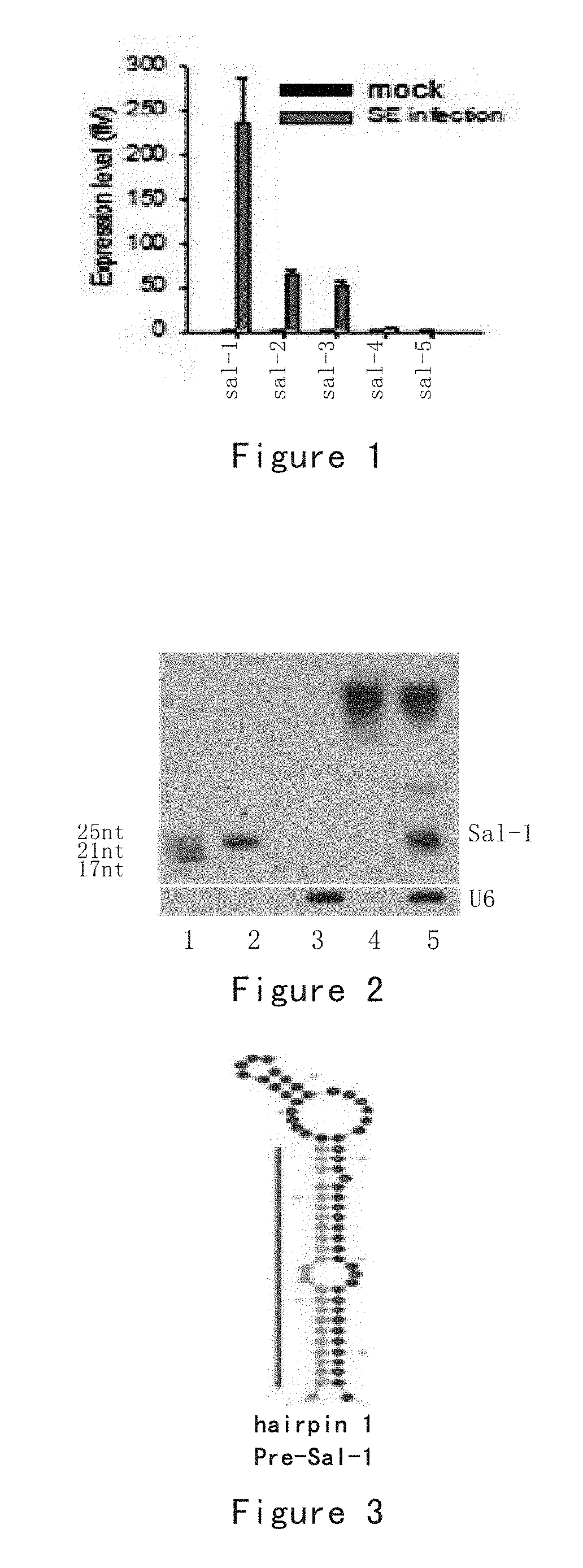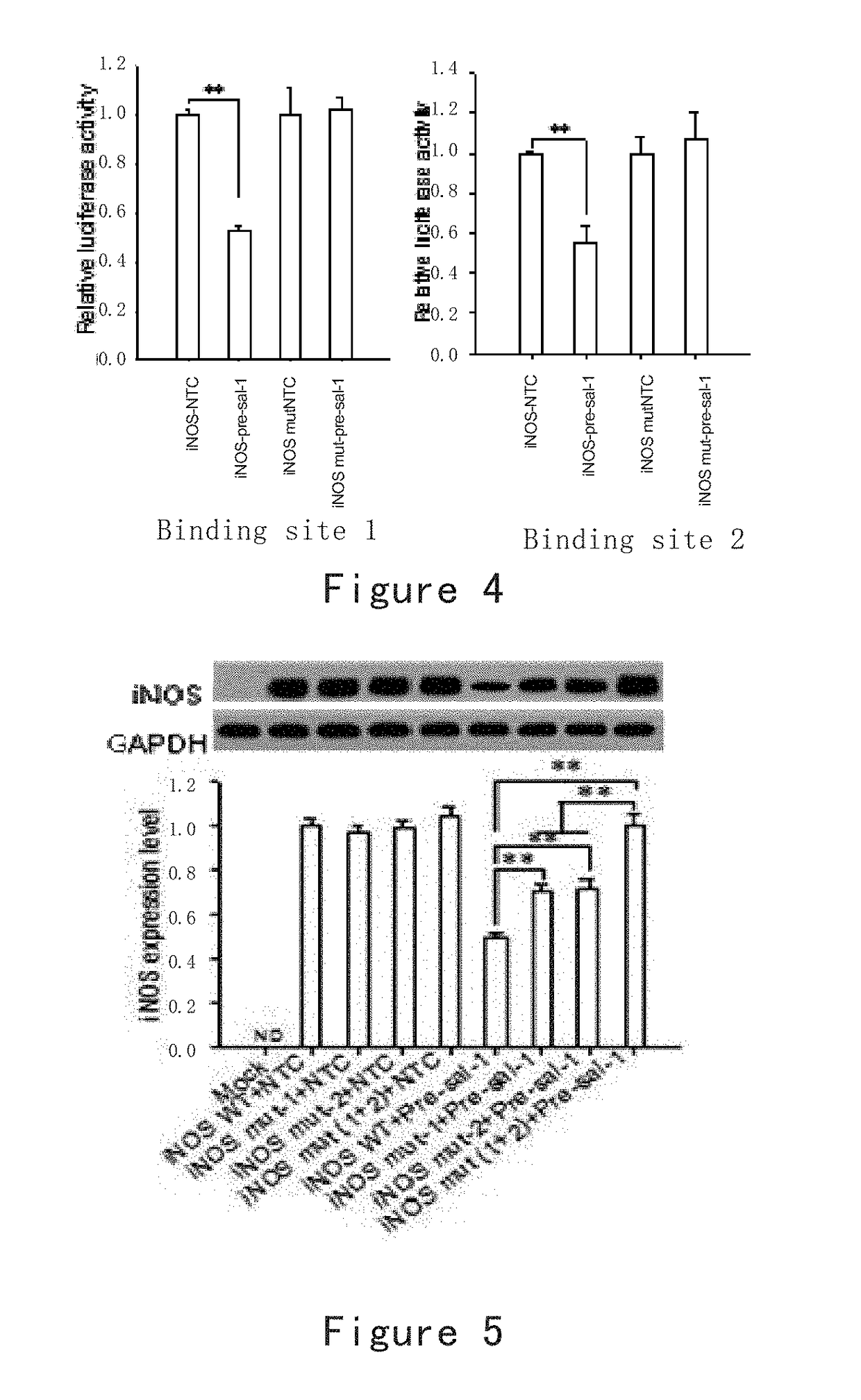Non-coding RNA of Salmonella and identification and use thereof
a non-coding, rna technology, applied in the field of biotechnology, can solve the problems of host illness, more dangerous drug-resistant strains, lack of effective therapeutic drugs, etc., and achieve the effect of accurate results and simple operation
- Summary
- Abstract
- Description
- Claims
- Application Information
AI Technical Summary
Benefits of technology
Problems solved by technology
Method used
Image
Examples
example 2
The Ability of milRNA Inhibitors to Inhibit the Bacteria Infecting Hosts
[0186]2.1 In Vitro Test
[0187]In this test, for the identified Salmonella specific sal-1, the correlation between it and the target gene inducible nitric oxide synthase (iNOS) is studied.
[0188]A target site region capable of binding with milRNA is amplified by PCR, double-digested by Spe I+Hind III and inserted into a pMIR-REPORT luciferase vector (purchased from Shanghai Innovation Biotechnology Co., Ltd.) to construct a recombinant plasmid (iNOS). In addition, the milRNA binding site of the above constructed recombinant plasmid is mutated to construct a recombinant mutant plasmid (iNOS mut).
[0189]Furthermore, the precursor of milRNA is loaded to an expression vector with CMV as a promoter, to construct a vector (pre-sal-1) overexpressing milRNA.
[0190]The milRNA control plasmid or pre-sal-1 and iNOS or iNOS mut are co-transfected into HEK-293T cells, and the reporter gene is detected, with the β-gal plasmid as a...
example 3
Use of Salmonella milRNA
[0211]The milRNA of the present invention is used for (a) the preparation of a reagent, a detecting chip or a kit for detecting Salmonella infections; or (b) the preparation of a regulator for regulating the iNOS expression or activity
[0212]The nucleic acid chip for detecting Salmonella infections comprises: a solid-phase carrier; and oligonucleotide probes orderly fixed on the said solid-phase carrier, and the said oligonucleotide probes specifically capture the milRNA of the present invention.
[0213]The nucleic acid chip for detecting Salmonella infections of the present invention can screen with a high-throughput milRNA probes that stably change in serum, and furthermore predict and diagnose diseases through the overall change of milRNA in serum. The inventor firstly determines milRNA with no less than one copy in serum by the sequencing or quantitative PCR method, then synthesize reverse complementary probes of these milRNAs, and then spot these probes on ...
PUM
| Property | Measurement | Unit |
|---|---|---|
| diameter | aaaaa | aaaaa |
| diameter | aaaaa | aaaaa |
| temperature | aaaaa | aaaaa |
Abstract
Description
Claims
Application Information
 Login to View More
Login to View More - R&D
- Intellectual Property
- Life Sciences
- Materials
- Tech Scout
- Unparalleled Data Quality
- Higher Quality Content
- 60% Fewer Hallucinations
Browse by: Latest US Patents, China's latest patents, Technical Efficacy Thesaurus, Application Domain, Technology Topic, Popular Technical Reports.
© 2025 PatSnap. All rights reserved.Legal|Privacy policy|Modern Slavery Act Transparency Statement|Sitemap|About US| Contact US: help@patsnap.com



